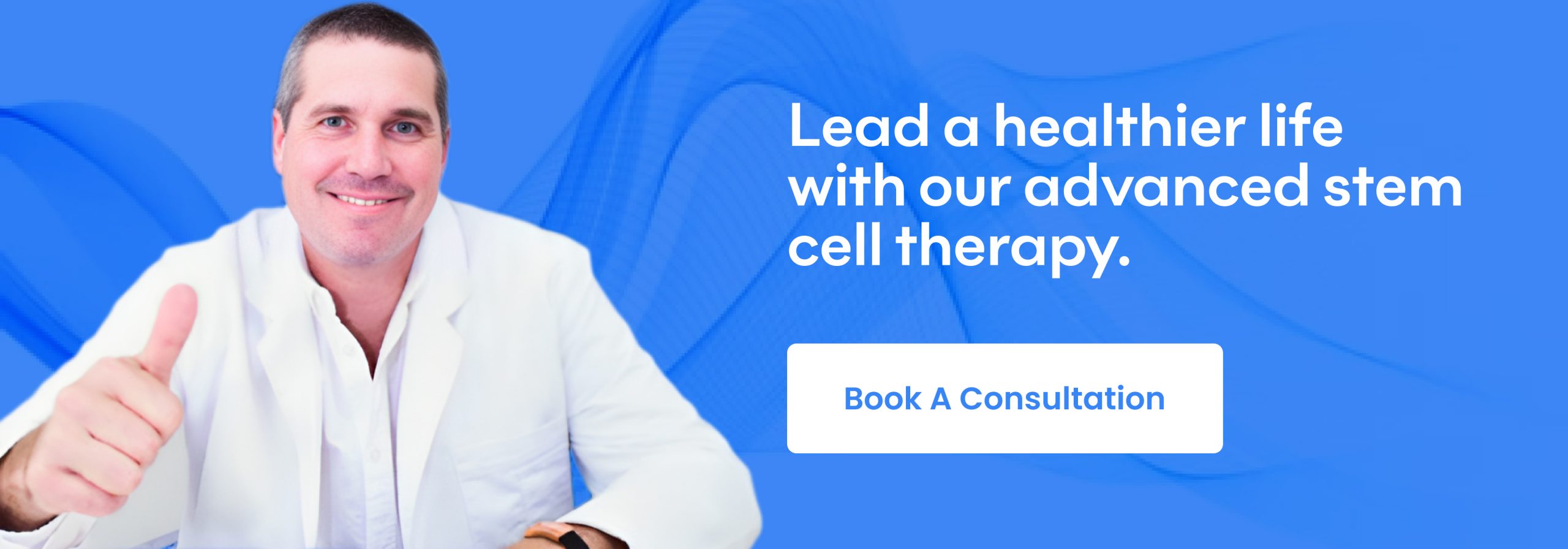Weighing the Scales: Stem Cell Therapy vs Traditional Treatments
In the arena of medical treatments, the clash between innovation and tradition unfolds in the debate between Stem Cell Therapy and Traditional Treatments. This comprehensive guide aims to dissect the advantages and disadvantages of each, offering insights into their efficacy, safety, and the transformative potential they bring to the realm of healing. As we navigate this battleground of medical interventions, we’ll explore the intricacies of Stem Cell Therapy and its traditional counterparts, providing a roadmap for individuals seeking the most effective and suitable approach to their health concerns.

Stem Cell Therapy: A Glimpse into the Future of Medicine:
Stem Cell Therapy represents a paradigm shift in the approach to healing. Unlike traditional treatments that primarily manage symptoms, stem cell therapy aims to address the root causes of diseases and injuries. Stem cells, with their regenerative potential, offer a glimpse into a future where the body’s innate ability to heal is harnessed for transformative medical interventions.
Advantages of Stem Cell Therapy:
- Regeneration at the Cellular Level: The primary advantage of stem cell therapy lies in its ability to stimulate tissue regeneration at the cellular level. Stem cells have the unique capacity to transform into specialized cells, promoting the repair of damaged tissues and organs.
- Reduced Inflammation and Immune Modulation: Stem cells possess immunomodulatory properties, meaning they can modulate the immune system’s response. This feature is particularly beneficial in conditions characterized by inflammation, as stem cells work to reduce immune system overactivity.
- Potential for Personalized Treatment: Stem cell therapy allows for a personalized approach to treatment. The source of stem cells, whether from the patient’s own body or from donor tissues, can be tailored to individual needs, increasing the likelihood of positive outcomes.
- Minimally Invasive Procedures: In many cases, stem cell therapies involve minimally invasive procedures. This reduces the risks associated with surgery, shortens recovery times, and allows for outpatient treatments.
- Holistic Approach to Healing: Stem cell therapy goes beyond symptom management, aiming to address the underlying causes of diseases. This holistic approach sets the stage for long-lasting improvements in health and quality of life.
Disadvantages of Stem Cell Therapy:
- Limited Research in Some Areas: While stem cell therapy has shown promise in various fields, there are still areas where extensive research is needed. The science is continually evolving, and not all applications of stem cell therapy have undergone rigorous clinical testing.
- Ethical Considerations: The use of embryonic stem cells raises ethical concerns for some individuals due to the potential destruction of embryos. However, many modern stem cell therapies utilize adult stem cells, bypassing this ethical dilemma.
- Cost: Stem cell therapy can be relatively expensive, and it may not always be covered by insurance. The financial aspect can be a limiting factor for individuals seeking these innovative treatments.
- Variable Success Rates: The success of stem cell therapy can vary depending on factors such as the type and severity of the condition, the source of the stem cells, and individual patient factors. Not all patients may experience the same level of benefit.
- Regulatory Challenges: The regulatory landscape for stem cell therapy is still evolving. The lack of standardized regulations globally can lead to variations in the quality and safety of treatments.
Traditional Treatments: Time-Tested Approaches to Healing:
Traditional treatments have long been the cornerstone of medical care, providing relief and management for a wide range of conditions. While they may not possess the regenerative potential of stem cell therapy, traditional treatments have stood the test of time and continue to play a crucial role in healthcare.
Advantages of Traditional Treatments:
- Well-Established Protocols: Traditional treatments are often based on well-established protocols with a robust body of scientific evidence supporting their efficacy. This provides a sense of reliability and predictability in their outcomes.
- Wide Accessibility: Traditional treatments are widely accessible and often covered by insurance. This accessibility ensures that a broader population can benefit from these interventions without significant financial burdens.
- Proven Track Record: Many traditional treatments have a long history of success in managing symptoms and improving patient outcomes. Their proven track record instills confidence in both healthcare providers and patients.
- Insurance Coverage: In many cases, traditional treatments are covered by health insurance, making them more financially feasible for a large portion of the population.
- Familiarity and Acceptance: Traditional treatments are familiar to both healthcare professionals and patients. The acceptance and understanding of these interventions contribute to their widespread use.
Disadvantages of Traditional Treatments:
- Symptom Management: Traditional treatments often focus on managing symptoms rather than addressing the underlying causes of diseases. While this provides relief, it may not lead to long-term solutions.
- Potential Side Effects: Many traditional treatments come with potential side effects and adverse reactions. These can range from mild discomfort to more severe complications, impacting the overall well-being of patients.
- Limited Regenerative Capacity: Unlike stem cell therapy, traditional treatments lack the regenerative capacity to repair damaged tissues at the cellular level. This limitation may result in the need for ongoing or repeated treatments.
- Invasive Procedures: Certain traditional treatments, such as surgery, can be invasive and require extended recovery times. Invasive procedures come with inherent risks and may not be suitable for all individuals.
- One-Size-Fits-All Approach: Traditional treatments often follow a standardized approach that may not account for individual variations in patient response. This one-size-fits-all approach may not be optimal for conditions with diverse underlying causes.
Navigating the Crossroads: Choosing the Right Path for Healing:
In the clash between Stem Cell Therapy and Traditional Treatments, the choice ultimately depends on the nature of the condition, the patient’s health status, and individual preferences. Some conditions may benefit more from the regenerative potential of stem cell therapy, while others may find effective relief through time-tested traditional treatments.
Considerations for Choosing the Right Modality:
- Nature of the Condition: Evaluate the specific nature of the medical condition. Conditions with a strong inflammatory component or those involving tissue damage may respond well to stem cell therapy.
- Patient Health Status: Consider the overall health status of the patient. Stem cell therapy may be more suitable for individuals who are not ideal candidates for invasive procedures or have conditions that traditional treatments struggle to address.
- Availability and Accessibility: Assess the availability and accessibility of both modalities. In some cases, the proximity to a reputable stem cell therapy center or the familiarity of a healthcare provider with traditional treatments may influence the decision.
- Cost Considerations: Evaluate the financial aspects of both treatments. While stem cell therapy may be more expensive, the potential for long-term benefits may justify the investment for some patients.
- Patient Preferences: Consider the patient’s preferences and comfort level with each modality. Some individuals may be more inclined towards the innovative approach of stem cell therapy, while others may prefer the familiarity of traditional treatments.
Conclusion: Striking a Balance for Optimal Healing:
The clash between Stem Cell Therapy and Traditional Treatments unveils a nuanced landscape where innovation and tradition converge. While each modality brings its own set of advantages and disadvantages, the key lies in striking a balance that aligns with the individual needs and characteristics of patients.
In the evolving landscape of healthcare, the integration of both regenerative therapies and time-tested interventions may pave the way for a holistic approach to healing. As medical science continues to advance, the synergistic use of Stem Cell Therapy and Traditional Treatments may herald a new era where the best of both worlds converges to provide optimal solutions for diverse health concerns.

